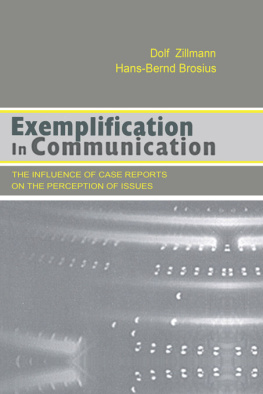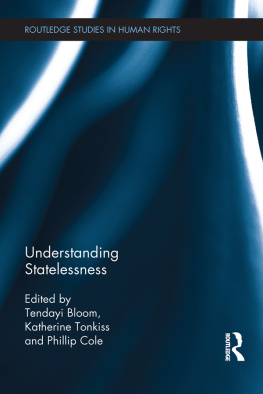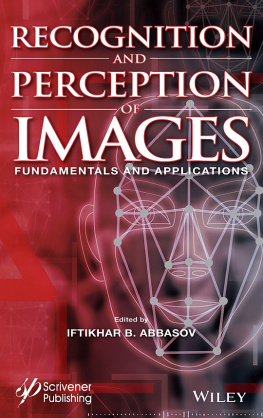Dolf Zillmann - Exemplification in Communication: the influence of Case Reports on the Perception of Issues
Here you can read online Dolf Zillmann - Exemplification in Communication: the influence of Case Reports on the Perception of Issues full text of the book (entire story) in english for free. Download pdf and epub, get meaning, cover and reviews about this ebook. year: 2000, publisher: Routledge, genre: Romance novel. Description of the work, (preface) as well as reviews are available. Best literature library LitArk.com created for fans of good reading and offers a wide selection of genres:
Romance novel
Science fiction
Adventure
Detective
Science
History
Home and family
Prose
Art
Politics
Computer
Non-fiction
Religion
Business
Children
Humor
Choose a favorite category and find really read worthwhile books. Enjoy immersion in the world of imagination, feel the emotions of the characters or learn something new for yourself, make an fascinating discovery.
- Book:Exemplification in Communication: the influence of Case Reports on the Perception of Issues
- Author:
- Publisher:Routledge
- Genre:
- Year:2000
- Rating:5 / 5
- Favourites:Add to favourites
- Your mark:
Exemplification in Communication: the influence of Case Reports on the Perception of Issues: summary, description and annotation
We offer to read an annotation, description, summary or preface (depends on what the author of the book "Exemplification in Communication: the influence of Case Reports on the Perception of Issues" wrote himself). If you haven't found the necessary information about the book — write in the comments, we will try to find it.
Exemplification is subjected to conceptual scrutiny and a new theoretical framework is offered. Contemporary psychological paradigms are applied to predict effects of various forms of exemplification. Perhaps most important, novel experimental research is presented to document the specific consequences of exemplifications featured in the news, even of those featured in fiction. Finally, recommendations for information providers and recipients are derived from the research demonstration in order to advance media literacy specific to exemplification.
This unique volume:
* provides a comprehensive account of the power of case-report selection in the manipulation of perceptions of social issues,
* addresses exemplification in communication, i.e., the influence of case reports in the news media, primarily, on the perception of pertinent social issues,
* offers an empirical assessment of the practice of issue exemplifying by the media,
* gives an exhaustive account of representative research on exemplification effects on issue perception--primarily by the news media, but also by the entertainment media, and
* includes a compilation of guidelines for information providers and recipients in efforts at creating media literacy with regard to exemplification.
Dolf Zillmann: author's other books
Who wrote Exemplification in Communication: the influence of Case Reports on the Perception of Issues? Find out the surname, the name of the author of the book and a list of all author's works by series.








